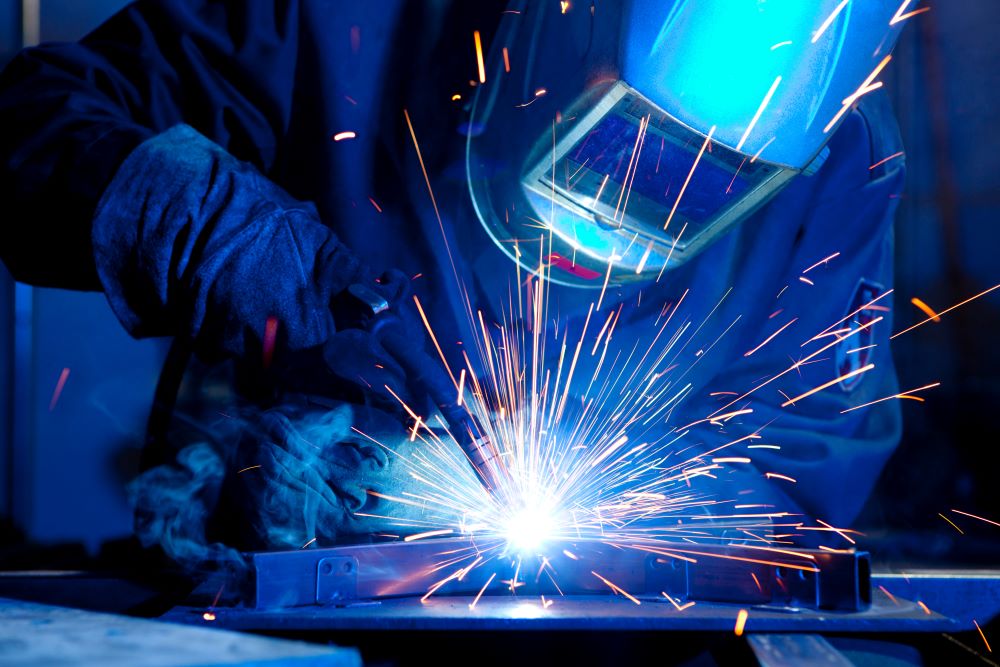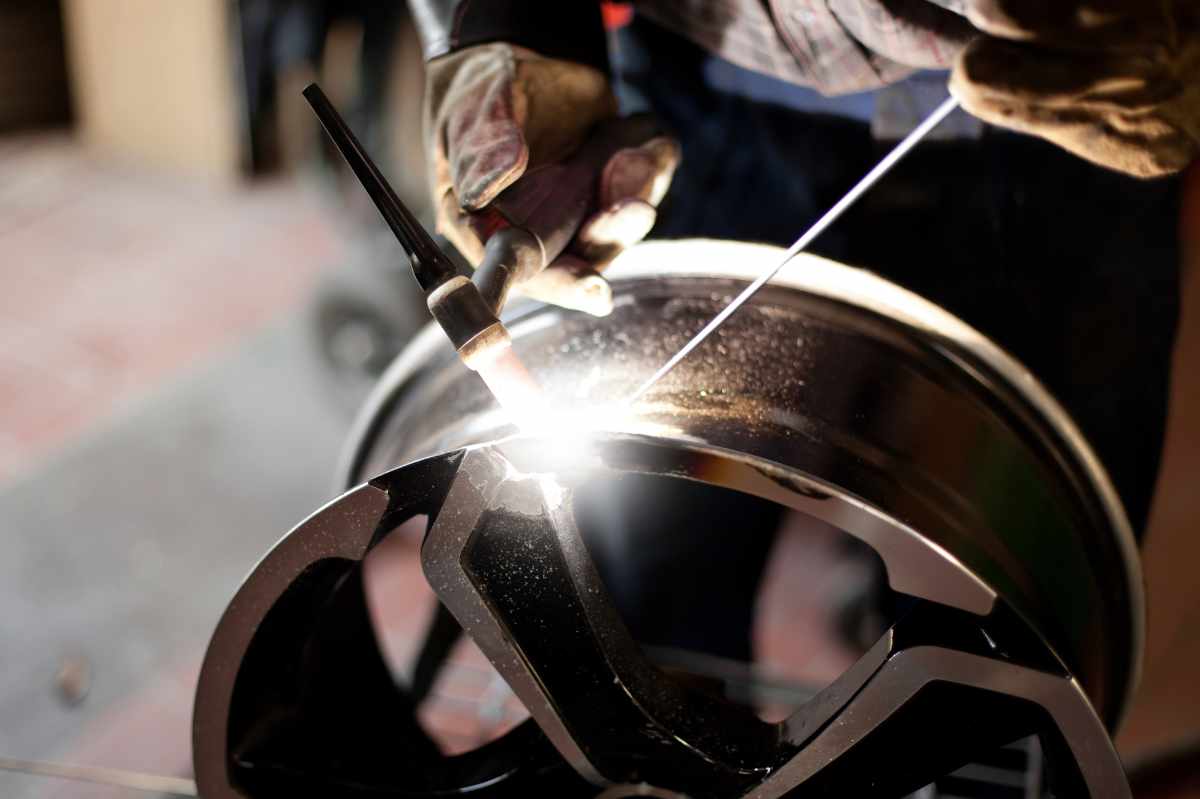Common Welding Repair Service Issues and How to Address Them Effectively
Welding repair work commonly encounter a variety of issues that can endanger the honesty of the end product. Typical issues consist of inadequate penetration, porosity, and misalignment, to name a few. Each defect presents one-of-a-kind difficulties that need particular methods for resolution. Understanding these concerns is necessary for welders aiming to improve their results and skills. This conversation will explore these typical welding repair problems and reliable techniques to resolve them.
Poor Penetration
Inadequate infiltration happens when the weld steel fails to fully fuse with the base product, resulting in weak joints and prospective structural failures. This issue frequently comes from inadequate warmth input, incorrect electrode angle, or improper welding rate. Welders might run into insufficient infiltration due to a mistake of the required criteria for a specific product thickness or kind. In addition, contamination on the base material's surface can hinder effective bonding, exacerbating the issue. To resolve insufficient penetration, welders need to ensure appropriate setups on their devices and keep a clean job surface. Regular evaluation of welds is suggested to recognize any shortages early, enabling prompt adjustments and the avoidance of compromised structural honesty in bonded assemblies.
Porosity
Porosity is a common flaw in bonded joints that shows up as little gas bubbles caught within the weld metal. This defect can compromise the integrity of the weld, bring about decreased toughness and prospective failure under stress and anxiety. Montana Mobile Welding and Repair Belgrade Welding. Porosity normally develops from contamination, moisture, or incorrect welding methods, which permit gases to get away into the molten weld pool. To address porosity, welders must ensure appropriate surface area preparation, preserve a clean workplace, and make use of appropriate welding parameters. In addition, choosing the appropriate filler product and protecting gas can alleviate gas entrapment. Normal examination and testing of welds can help identify porosity early, assuring prompt corrective actions are taken, thus maintaining the quality and integrity of the welded structure
Imbalance
Imbalance in welding can emerge from numerous factors, consisting of incorrect configuration and thermal expansion. Recognizing the source is essential for efficient resolution. Several modification strategies are readily available to realign elements and guarantee architectural integrity.
Reasons for Imbalance
Welding imbalance commonly stems from a range of underlying issues that can compromise architectural honesty. One key reason is improper fit-up of components before welding, which can result in gaps and uneven surface areas. Variations in thermal expansion throughout the welding procedure can likewise result in distortion, specifically if the materials being signed up with have different coefficients of growth. Furthermore, inadequate securing and fixturing may fail to hold parts securely in location, leading to motion throughout welding. Inadequately kept devices, including welding devices and tools, might introduce disparities in the weld bead, further contributing to misalignment. Lastly, operator mistake, originating from inadequate training or experience, can also play a considerable role in creating misaligned welds.
Improvement Techniques Available
Dealing with misalignment efficiently requires a combination of corrective methods customized to the details concerns handy. One usual approach is using jigs or components to hold components in the proper setting throughout welding, guaranteeing regular alignment. Furthermore, preheating the materials can assist lower distortion and improve fit-up. For significant misalignment, mechanical realignment techniques, such as utilizing hydraulic jacks or clamps, can be employed to deal with the setting before welding. Post-weld warmth treatment may likewise be needed to alleviate stress and anxieties triggered by imbalance. Finally, mindful evaluation and change throughout the configuration phase can prevent imbalance concerns from becoming substantial issues, promoting a smoother welding process and boosting total architectural integrity.
Distortion
Distortion is an usual obstacle in welding that can occur from numerous factors, consisting of unequal heating & cooling. Understanding the reasons for distortion is crucial for carrying out efficient prevention techniques. Resolving this problem not just enhances structural stability but also enhances the general quality of the weld.
Reasons of Distortion
When based on the intense warm of welding, products typically undergo adjustments that can result in distortion. This sensation largely arises from thermal expansion and contraction during the welding process. As the weld location warms up, the product broadens; upon air conditioning, it acquires, which can create inner anxieties. In addition, irregular home heating throughout a workpiece can exacerbate these anxieties, leading to warping or flexing. The kind of material also plays a considerable function; steels with varying thermal conductivity and coefficients of development might respond differently, causing unpredictable distortions. Bad joint layout and inadequate fixturing can add to imbalance throughout welding, raising the probability of distortion. Recognizing these reasons is vital for reliable welding repair service and prevention approaches.
Prevention Techniques
Efficient avoidance techniques for distortion during welding concentrate on regulating heat input and ensuring appropriate joint style. Keeping a constant heat input aids to minimize thermal expansion and contraction, which can bring about distortion. Utilizing techniques such as pre-heating the workpiece can additionally lower the temperature gradient, promoting consistent heating. Furthermore, picking suitable joint styles, such as T-joints or lap joints, can enhance security and reduce stress concentrations. Carrying out correct fixturing to protect the work surfaces in position additionally help in maintaining positioning throughout the welding procedure. Lastly, staggered welding sequences can distribute heat a lot more evenly, avoiding localized distortion. By using these techniques, welders can micro welding substantially reduce the chance of distortion and boost the overall quality of their welds.
Breaking
Splitting is a common concern come across in welding fixings, typically arising from different aspects such as improper air conditioning prices, product selection, or poor joint preparation. The event of fractures can greatly jeopardize the stability of the weld, causing prospective failures throughout operation. To address this problem, welders should initially examine the origin creates, making sure that products are compatible and appropriately selected for the specific application. Additionally, regulating the cooling rate throughout the welding procedure is necessary; fast cooling can cause stress and lead to breaking. Appropriate joint design and prep work also add to decreasing the risk. Carrying out these methods can improve weld high quality and longevity, inevitably reducing the likelihood of YOURURL.com cracking in completed weldments.

Incomplete Combination
A substantial problem in welding repairs is incomplete blend, which happens when the weld steel does not sufficiently bond with the base product or previous weld passes - Montana Mobile Welding and Repair Belgrade Fabrication. This defect can cause weak points in the joint, potentially jeopardizing the integrity of the welded structure. Elements contributing to insufficient fusion include not enough heat input, inappropriate welding technique, and contamination of the surface areas being joined. To resolve this problem effectively, welders must guarantee correct pre-weld cleaning and surface prep work, in addition to change their welding parameters to achieve ample penetration and blend. Normal evaluation throughout the welding process can also assist determine insufficient blend early, enabling timely corrective steps to boost the total quality of the weld
Overheating
While welding repair work can improve structural stability, overheating offers a significant obstacle that can lead to product destruction. Too much heat during welding can modify the mechanical residential or commercial properties of metals, resulting in lowered strength, boosted brittleness, and warping. This sensation is specifically essential in high-stress applications where structural integrity is paramount. Identifying overheating can involve aesthetic assessments for discoloration or distortion, along with keeping an eye on temperature during the welding procedure. To alleviate the dangers connected with overheating, welders ought to use suitable strategies, such as controlling warm input, changing travel speed, and using suitable filler products. Additionally, carrying out pre- and post-weld warmth treatments can help recover blog product buildings and improve the overall quality of the repair work, guaranteeing lasting performance and safety and security.
Often Asked Questions
What Are the Typical Signs of a Welding Defect?

Exactly How Can I Examine My Welds for Quality?
To examine welds for top quality, one can make use of aesthetic inspections, ultrasonic testing, and radiographic techniques. Each strategy assures structural stability, recognizes defects, and validates adherence to defined standards, ultimately boosting the integrity of the welded joints.
What Security Preventative Measures Should I Take While Welding?
When welding, one need to prioritize safety by using appropriate individual protective tools, making sure proper ventilation, protecting flammable materials away, preserving a clean office, and understanding environments to avoid accidents and injuries.
Can I Fix a Weld Without Renovating the Entire Joint?
Fixing a weld without redesigning the whole joint is possible, depending upon the damages (Fabrication). Strategies such as grinding, including filler product, or utilizing a welding process can properly resolve certain imperfections while preserving the surrounding structure
What Devices Are Crucial for Efficient Welding Fixes?
Crucial devices for effective welding repairs include a welding maker, cord brush, grinder, safety gear, clamps, and filler products. Each device plays a vital function in ensuring top quality and security during the repair service procedure. Porosity usually develops from contamination, dampness, or inappropriate welding techniques, which enable gases to escape into the liquified weld pool. Poorly maintained devices, consisting of welding makers and tools, might present inconsistencies in the weld grain, further contributing to imbalance. When subjected to the intense heat of welding, products often go through changes that can lead to distortion. Splitting is a common issue come across in welding repair work, commonly resulting from numerous factors such as incorrect air conditioning prices, product option, or inadequate joint prep work. A significant concern in welding fixings is insufficient blend, which occurs when the weld steel does not appropriately bond with the base material or previous weld passes.